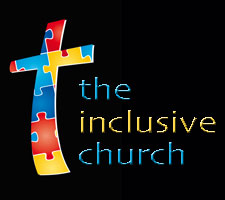Statistics of Children with Special Needs (Updated for 2013)
Three years ago I spent several days researching to find as many statistics as I could related to children with special needs. After reading through countless webpages of official government studies and data, I wrote this post to show church leaders that the number of families impacted by disability was growing and more prevalent than our church attendance reflected. That post turned out to be incredibly popular. And thanks to a increasing number of influential voices in special needs and ministry circles, churches are getting the message.
Because the older post with statistics remains so popular, I thought I’d offer an updated post today with the same stats I share in Chapter 3 of Leading a Special Needs Ministry: A Practical Guide to Including Children and Loving Families.
***************************************
Feel free to repost or repin the infographic (image) above. It is appreciated if you link it back to this site. Thanks!
Here’s a PDF of the above image: Special Needs Stats June 2013 PDF
According to a 2005 U.S. Census study, 54.4 million Americans, or about one in five U.S. residents, have a disability. This demographic is equal to the population of Florida and California combined. Between 2002 and 2005, both the percentage and number of Americans affected by disability rose, as has been the trend for some time.1 Statistics also tell us that among children ages 3 to 17, nearly 14 percent have a developmental disability.2
Consider the increase in the incidence of autism. Between 1997 and 2008, the prevalence of autism diagnoses increased 289.5 percent.3 And by 2013, 1 in 50 children was identified with an autism spectrum disorder.4 The incidence rate among boys is actually as high as 1 in 31 (3.23%).5 Some professionals argue that these statistics are still too conservative, only taking into account children who have been formally diagnosed with an ASD (autism spectrum disorder). A respected South Korean study identified as many as 1 in 38 children as exhibiting characteristics associated with autism.6
With these statistics in mind, can any ministry ignore the need to prepare for participants with learning differences and disabilities?
- .14 percent of babies are born with Down syndrome (1/691 babies).7
- 2 percent of children have been identified with an autism spectrum disorder (1/50 children).8
- 7 percent of children ages 3 to 17 have been identified with ADHD.9
- 8 percent of children ages 3 to 17 have been identified with a learning disability.10
- 14 percent of children ages 13 to 17 have been identified with a developmental disability.11
- 17 percent of Americans are estimated to experience a communication disorder at some point in their life (1/6 Americans).12
- 19 percent of Americans of all ages are classified as a person with a disability (12 percent are severely disabled).13
- 25 percent of 13- to 18-year-olds are identified with an anxiety.14
- .31 percent of children have been identified with Cerebral Palsy (1/323 children).15
- Cerebral Palsy is the most common motor disability in childhood.15
Sources:
1. http://www.census.gov/newsroom/releases/archives/income_wealth/cb08-185.html
2. http://www.cdc.gov/features/dsdev_disabilities/index.html
3. http://www.cdc.gov/features/dsdev_disabilities/index.html
4. http://www.cdc.gov/nchs/data/nhsr/nhsr065.pdf
5. http://www.cdc.gov/nchs/data/nhsr/nhsr065.pdf
6. http://www.ncbi.nlm.nih.gov/pubmed/21558103
7. http://www.cdc.gov/ncbddd/birthdefects/DownSyndrome.html
8. http://www.cdc.gov/nchs/data/nhsr/nhsr065.pdf
9. http://www.cdc.gov/features/dsdev_disabilities/index.html
10. http://www.cdc.gov/features/dsdev_disabilities/index.html
11. http://www.cdc.gov/features/dsdev_disabilities/index.html
12. http://www.nidcd.nih.gov/staticresources/about/plans/strategic/FY2009-2011NIDCDStrategicPlan.pdf
13. http://www.census.gov/newsroom/releases/archives/income_wealth/cb08-185.html
14. http://www.nimh.nih.gov/statistics/1ANYANX_child.shtml
15. http://www.cdc.gov/ncbddd/cp/data.html
(Updated March 26, 2014)




Thank you, Amy!!! 🙂
Greetings….you left off a large portion of Americans when you didn’t include Mental Illness. Approximately 1 in 4 adults and 1 in 5 children have a diagnosable mental illness in the US. You only listed anxiety.
Hi Lisa – Thanks for pointing this out! I am sure many readers would love to use this stat as well — if you could link to a source for that statistic that would be helpful. I used only stats that I could link to a credible source such as a research study. Thanks! – Amy